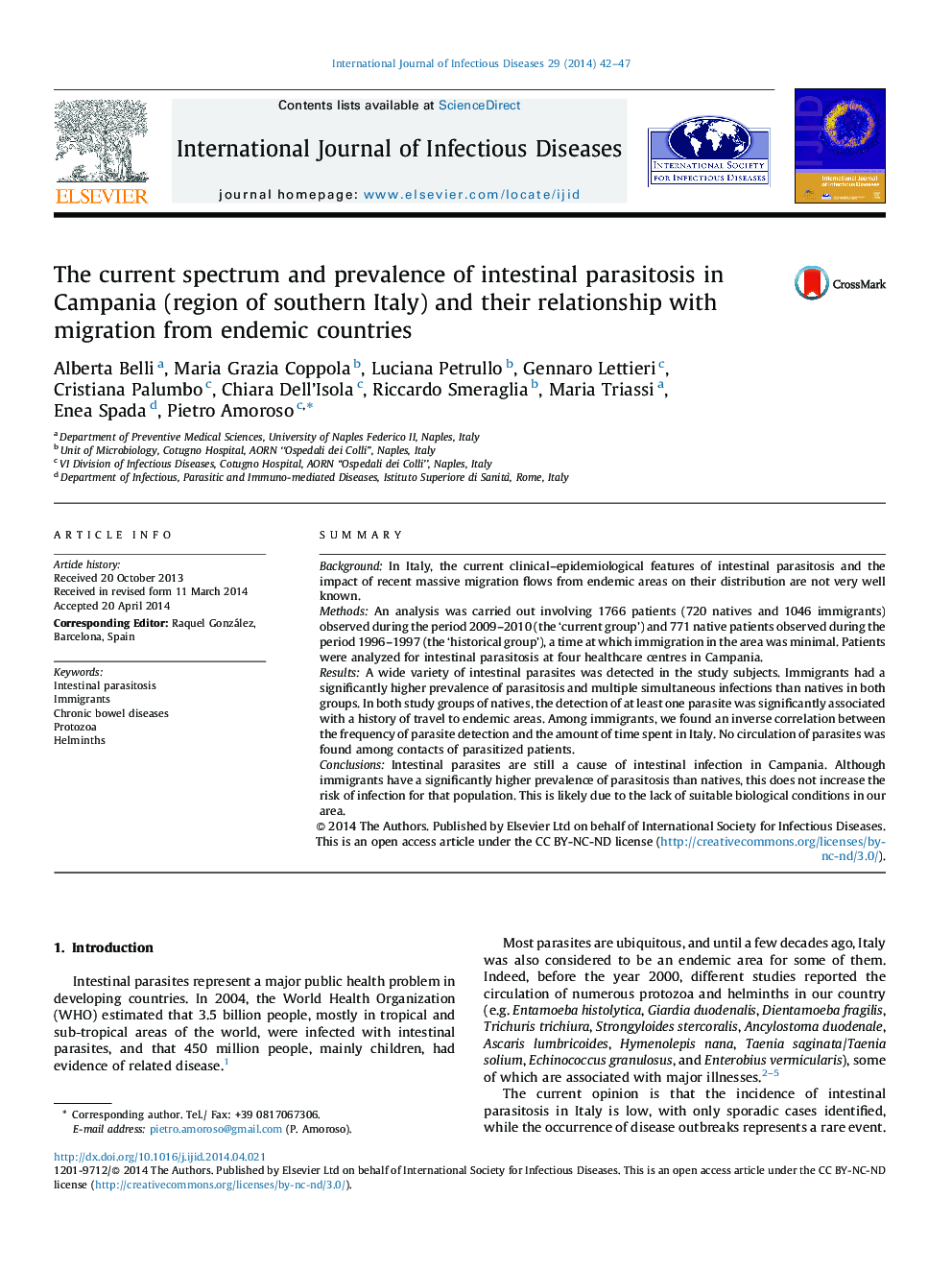| Article ID | Journal | Published Year | Pages | File Type |
|---|---|---|---|---|
| 3362324 | International Journal of Infectious Diseases | 2014 | 6 Pages |
SummaryBackgroundIn Italy, the current clinical–epidemiological features of intestinal parasitosis and the impact of recent massive migration flows from endemic areas on their distribution are not very well known.MethodsAn analysis was carried out involving 1766 patients (720 natives and 1046 immigrants) observed during the period 2009–2010 (the ‘current group’) and 771 native patients observed during the period 1996–1997 (the ‘historical group’), a time at which immigration in the area was minimal. Patients were analyzed for intestinal parasitosis at four healthcare centres in Campania.ResultsA wide variety of intestinal parasites was detected in the study subjects. Immigrants had a significantly higher prevalence of parasitosis and multiple simultaneous infections than natives in both groups. In both study groups of natives, the detection of at least one parasite was significantly associated with a history of travel to endemic areas. Among immigrants, we found an inverse correlation between the frequency of parasite detection and the amount of time spent in Italy. No circulation of parasites was found among contacts of parasitized patients.ConclusionsIntestinal parasites are still a cause of intestinal infection in Campania. Although immigrants have a significantly higher prevalence of parasitosis than natives, this does not increase the risk of infection for that population. This is likely due to the lack of suitable biological conditions in our area.
